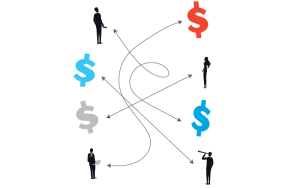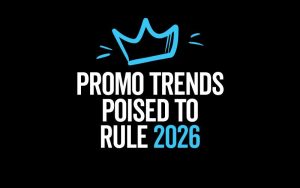Highlights:
- One-to-one attribution ties every sale back to an individual customer’s interactions across channels.
- Marketers use one-to-one attribution to justify spend, reallocate budgets effectively, and turn marketing into a measurable growth engine.
- Closing the loop with one-to-one multi-touch attribution ensures every dollar and channel is accounted for, linking online and offline actions to real outcomes.
It’s 2025. Proving the impact of your marketing shouldn’t feel like educated guesswork. And while impressions, clicks, and likes might look good in a deck, do they actually move the needle for revenue? That’s the million-dollar question, and its answer becomes more attainable every day.
Today, about 84% of marketers say they’re confident that marketing impacts revenue, yet only around 60% feel they can reliably demonstrate ROI. While this is a good start, the real leaders go one step further: they use one-to-one attribution to prove exactly which actions generated sales—and then apply that knowledge to sharpen future campaigns.
What Exactly Is 1:1 Attribution?
Let’s clarify this term since it’s an important distinction. One-to-one attribution is the ability to tie a specific customer action or sale back to a specific individual’s interaction across multiple channels.
So you’re not just saying:
- “This campaign drove sales” (channel-based attribution), or
- “This last click before checkout drove the sale” (last-click attribution).
Instead, you’re showing the precise path Jane Smith took—clicking a paid search ad on Monday, opening your email on Wednesday, clicking your direct mail QR code on Thursday, and finally buying.
While there are many multi-touch attribution models—like linear, time-decay, or position-based—that distribute credit across several touchpoints, one-to-one attribution goes further. It connects each conversion to a single individual’s exact path to purchase, revealing the true impact of every marketing touchpoint.
This is the gold standard of multi-touch attribution models. It’s precise, it’s personal, and it turns what used to be “marketing guesswork” into powerful, measurable, bankable insights.
Related: Give Credit Where It’s Due In Customer Journey Attribution
Why It Matters Now
Customer journeys are more complex than ever, so multi-touch attribution is no longer optional; it’s survival. People bounce between social ads, direct mail, email, organic search, podcasts, and who-knows-what before buying.
With all of these measurements, modern attribution models now leverage machine learning to weigh touchpoints based on actual behavior patterns. The result? Smarter, faster decisions that keep you from wasting budget on channels that don’t pay off.
Beyond performance, attribution is also about proof. When you can clearly tie campaigns to revenue, it’s easier to justify budget increases, protect spend during cutbacks, and position marketing as a growth engine rather than a cost center. The more confidently you can show your impact, the more confidently leadership invests in your next idea.
The Payoff of 1:1 Attribution
When you connect the dots down to the individual level, you unlock:
- Smarter Targeting: Refine campaigns to reach audiences most likely to convert.
- Budget Efficiency: Reallocate spend in real time from vanity channels to ROI drivers.
- Data Intelligence: Use predictive analytics modeling to anticipate customer behavior, not just report on it.
Take email, for example. If you see one promotion consistently converting, you can confidently show stakeholders the revenue tied to that single touchpoint—and then double down.
Brands leaning into one-to-one attribution have seen dramatic ROI improvements. Domino’s, for instance, used it to power their iconic pizza emoji campaign and Snapchat “Dough to Door” stunt—driving a jaw-dropping 1,312% ROI in a single quarter.
That’s the difference between reporting vanity metrics and reporting numbers that make CFOs nod in approval.
Related: The Holes in Your Marketing Data
Closing the Loop
Closing the loop with one-to-one multi-touch attribution means every dollar spent can be traced to outcomes; every channel can be judged on its true contribution.
To do this well:
- Invest in a data intelligence partner: Look for vendors that help visualize insights through intuitive dashboards and scorecards.
- Report the entire journey: Even if a channel isn’t the final converter, show its role moving leads forward. For instance, paid search can drive traffic without converting leads to customers, so you’ll want to convey that in your report.
- Optimize in real time: With AI-powered attribution models, you can pivot campaigns mid-flight instead of waiting until the quarter ends.
The payoff? Marketers with attribution across multi-touch campaigns have reported efficiency gains of 15–30%.
How 1:1 Attribution Fuels Predictive Modeling
Here’s where things get really interesting. Once you know your best customers, their purchase paths, and the touchpoints that seal the deal—you can use that data to predict and replicate success.
Predictive modeling allows you to:
- Identify more high-value prospects who look like your best customers.
- Forecast which campaigns will deliver the strongest ROI.
- Build campaigns with greater confidence (and fewer debates based on gut instinct).
It’s like going from rearview mirror reporting to GPS-guided marketing.
Explore this further to stop wasting ad spend on guesses, and reallocate your budgets based on these insights to achieve buy-in from various team members. With the numbers to prove success, you can recreate it more often.
Related: Beyond the Dashboard: A Predictive Analytics Primer
Smarter Attribution, Smarter Growth
One-to-one multi-touch attribution isn’t just about proving past impact—it’s about shaping the future of your marketing. When every customer journey is mapped, every dollar is accounted for, and every forecast is grounded in data, you stop wasting spend on guesswork and start driving measurable growth.
Your customer data is a veritable gold mine. One-to-one attribution is how you dig deeper, discover the veins of ROI, and build predictive models that keep delivering.
Want to put it to work? Ironmark helps multi-location brands harness attribution models to close the loop, sharpen forecasting, and scale what works. We also offer strategies to take them to the next level, including predictive analytics, data modeling, and lead intelligence.
Let’s answer the million-dollar questions by uncovering the insights hidden in your campaigns—and turning them into your next competitive advantage.



